Where Was Time: The Public Clocks of Bombay
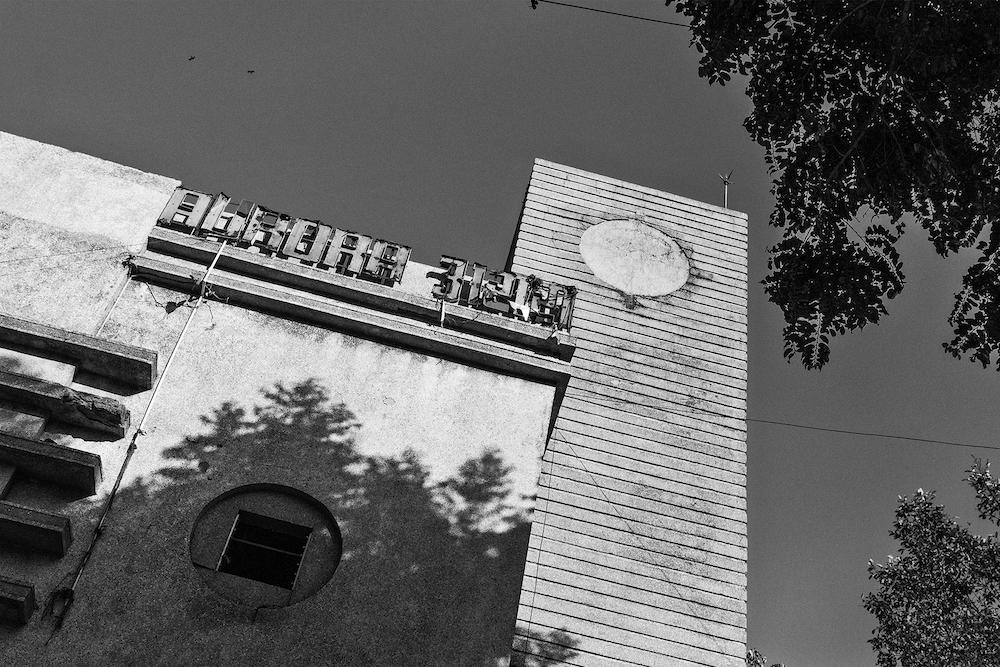
A photograph of the facade of Aurora Talkies, Matunga, at King's Circle. Aurora Talkies opened in 1942, in the architectural style of Art Deco. The tower clock at Aurora was effaced by rain and seepage, and its absence is marked by a vacant circle which once held the clock. (Image courtesy of the artist.)
In the essay “Whose Time Is It? The Pluralization of Time and the Global Condition,” Vanessa Ogle recounts an incident from 1881: James Fergusson, the (then) governor of the city of erstwhile Bombay missed a train due to his inability to unravel “…the thicket of simultaneously existing different times and schedules applied by railway lines, telegraph bureaus, and local town hall buildings across British India.” There were gaps and inconsistencies in the clock times of government offices and the wider time-consciousness of the city. Ogle notes that the public clock St. Thomas Cathedral ran on Madras time, but the High Court and private offices followed Bombay time. Fergusson suggested the integration of Madras time—which was followed by the remainder of the country—to the city. This proposal was met with a public uproar that aligned adherence to the local “solar” time with the identity of the city, linked to eschatological concerns. In the essay “Bombay Time/Standard Time,” Jim Masselos cites a petition reprinted in the Bombay Gazette (30 December 1905), which explained the effects of a shift to standard time on religious practice: “12.30 pm is the time of ‘Azan’ of the second prayer of the Mohamedans, which if Local time be standardised would be 11.51 am when the sun would never be overhead.” Solar time (also referred to as local time) marked auspicious moments in the day and astrological calendars, and public clocks were a feature in temples and other sites of worship.
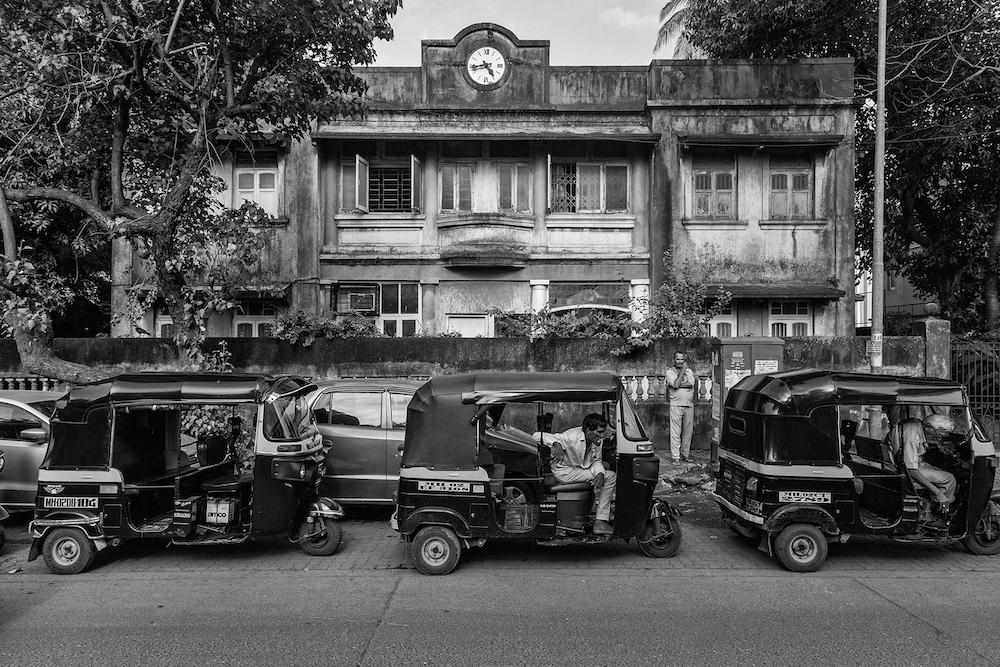
A photograph of Bhagat Bhuwan, a private residence in Vile Parle (West). The Bhagat family sold time pieces in a shop at Abdul Rehman Street, and installed this clock as a marker of their family trade and prestige. The clock, which was installed by German engineers in the 1950s, has to be wound every Sunday. (Image courtesy of the artist.)
In 1906, when Madras time was integrated by offices, it led to both protests and the eruption of a duality of time-consciousness, which Masselos describes in spatial terms:
“Municipal Corporation clocks in the Bori Bunder head office showed Bombay time, although standard time featured on the Victoria Terminus (now Chhatrapati Shivaji Terminus) railway clocks on the other side of the square. Invitations to meetings, social gatherings, dinners and the like necessarily included a ‘BT’ or ‘ST’ placed on them beside the time people were expected, otherwise they would be late or early according to the system followed.”
This duality would continue until 1955 when the city adopted standard time, and even after in the dissident clocks of cotton mills.
This detour through the history of colonial timekeeping in the city of erstwhile Bombay tells us that the measurement, display and belief in the timetable to be adhered to was a critical concern for its inhabitants, a matter interlaced with ideas of nationalism, faith and commerce, as well as the everyday life of the working class. Chirodeep Chaudhuri’s two-decade project documenting the public clocks of Bombay traces the residues of an era where the passage of time was marked by guiding objects on edifices of key buildings. These were so central to the experience of the city that in 1906 a roaring debate ensued over which time was to be followed by the then Bombay University’s Clock Tower, among the most prominent public clocks in the city (the advocates of local time won that round). However, it was the image of a clock on the facade of the Dwarkadhish Temple printed on a postcard that caught Chirodeep Chaudhuri’s eye first. Presented most recently in 2020 as an exhibition titled Seeing Time: Public Clocks of Bombay at Project88, Mumbai, the series has grown from a collection of black and white stills capturing over eighty public clocks to a project which attempts to understand the histories, valences and present-day relationships that people have forged with them. The photographs offer a glimpse into many material details—architectural styles, motifs, symbols and spatial organisation of the city over two centuries, serving as a repository of its landmarks and tucked away recesses. Chaudhuri’s dexterous search for clocks has produced both an exercise in recording and an elegy for the transformation of ordering devices into objects of curiosity.
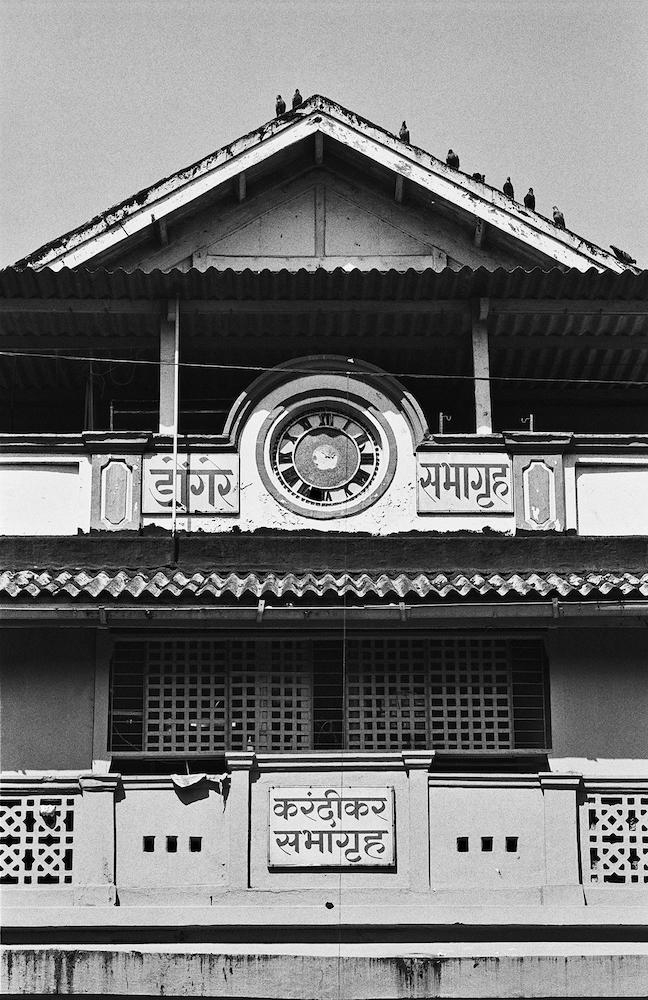
Public clocks performed not only the bureaucratic and religious function of ascribing daily time as per the register of secular and eschatological meanings, but were also a gesture of participation by institutions of civil society. Seen here is a clock on the facade of Brahman Sabha, a reformist organisation. (Image courtesy of the artist.)
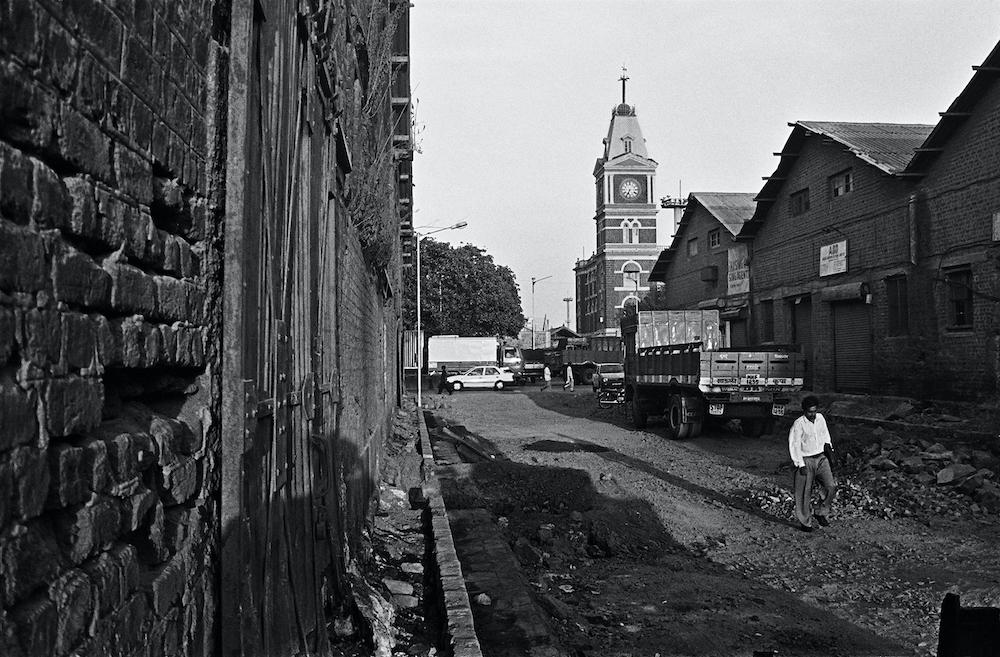
The public clock at Prince’s Dock (Ghadial Godi) added an additional layer of time consciousness to the city’s imagination, what Chaudhuri describes as “port signal time.” The clock, which was synchronised with Greenwich Mean Time, had a ball at the top, and the ball would drop around noon as a signal to the ships. (Image courtesy of the artist.)
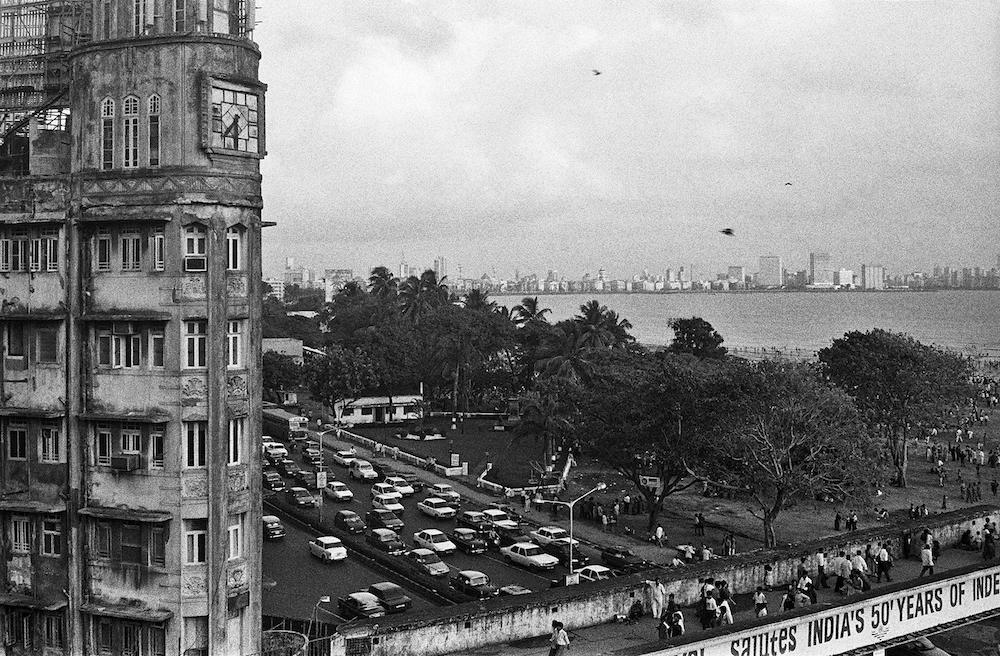
The iconic vista of Fulchand Niwas, a curvilinear Art Deco building in the streamliner style on the Chowpatty Sea Face, has featured in many a Bollywood film (notably Dev Anand starrer Funtoosh), its facade crowned by a public clock. While Fulchand Niwas was built in 1939, the clock was part of its original design and has stayed since. As part of his effort to preserve the “remembered history” of the city, Chaudhuri has spoken extensively with communities that inhabit the field of these public clocks, collecting anecdotes and personal histories. (Image courtesy of the artist.)
All images by Chirodeep Chaudhuri. From the series Seeing Time: The Public Clocks of Bombay. 1996–Ongoing.




